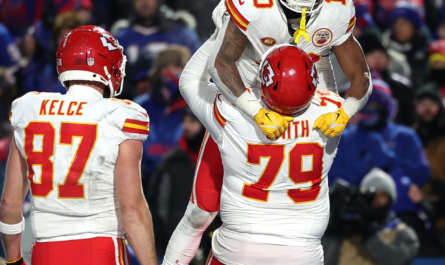Aaron Rodgers’s Brutal Training: A Comprehensive Exploration
[bg_collapse view=”button-orange” color=”#4a4949″ expand_text=”Show More” collapse_text=”Show Less” ]
Aaron Rodgers is renowned as one of the greatest quarterbacks to ever play in the NFL. At 38 years old, he is still performing at an elite level for the Green Bay Packers despite nearly two decades in the league. Much of Rodgers’s sustained success can be attributed to his rigorous training regimen, which has played a pivotal role in maintaining his peak athleticism and preventing injuries throughout his career. This article will provide an in-depth look at the foundation, specific exercises, recovery practices, and mental components that make up Rodgers’s brutal training routine.
Foundation of Rodgers’s Training
Core Strength
At the core of Rodgers’s training is a strong emphasis on core strength. He understands that a powerful core is essential for withstanding the physical demands of playing quarterback in the NFL. Rodgers incorporates exercises like planks, side planks, and Russian twists into every workout to strengthen his abdominal muscles and lower back. He performs these core exercises with strict form, holding challenging variations for extended durations. Rodgers believes a solid core serves as the foundation for explosive movements like throwing and provides protection against injuries.
Mobility and Flexibility
In addition to core strength, Rodgers prioritizes maintaining optimal mobility and flexibility. He engages in dynamic stretching and foam rolling before and after each training session to improve the range of motion in his joints. Rodgers also practices yoga regularly to enhance his flexibility and movement patterns. Maintaining mobility is especially important for a quarterback, as it allows Rodgers to freely move around the pocket and unleash throws from different arm angles. The flexibility components of his training help prevent soft tissue injuries that are common among football players.
Cardiovascular Endurance
No training program would be complete without addressing cardiovascular endurance. Rodgers incorporates high-intensity interval training (HIIT) workouts and long-distance running into his routine. During HIIT sessions, he pushes himself with bodyweight circuits and short bursts of maximum effort. Rodgers also runs 3-5 miles at a time to build aerobic endurance. These cardio exercises prepare his cardiovascular and respiratory systems for the non-stop action of an NFL game. Maintaining excellent endurance is vital for Rodgers to sustain his energy and focus throughout four quarters on game days.
Specific Exercises
With the foundational elements in place, Rodgers’s training delves into targeted strength exercises. He focuses on compound lifts that engage multiple muscle groups at once.
Squats
Heavy back squats are a staple in Rodgers’s lower body workouts. He performs barbell back squats with perfect form to build power in his legs. Rodgers also incorporates variations like front squats and goblet squats with kettlebells. Strong legs are crucial for a quarterback to withstand pressure from defensive linemen and scramble away from pass rushers.
Deadlifts
Deadlifts are another fundamental exercise in Rodgers’s program. He performs conventional barbell deadlifts as well as sumo deadlifts using challenging weight. These exercises strengthen Rodgers’s entire posterior chain, including his hamstrings, glutes, lower back, and traps. A powerful posterior chain enables Rodgers to swiftly drop back, shift directions, and drive throws with force.
Bench Press
Rodgers dedicates significant focus to his upper body training with exercises like the bench press. He presses heavy weight on the flat bench press to build pectoral and triceps strength. Rodgers also mixes in incline presses to target his shoulders. Developing an athletic chest, shoulders, and arms is important for a quarterback to withstand hits and deliver accurate passes.
Pull-Ups
As a compound bodyweight exercise, pull-ups are a staple in Rodgers’s back and biceps routine. He performs various grips like underhand, overhand, and parallel grips. Rodgers challenges himself with additional weight vest pull-ups as well. Strong pulling muscles in his back and arms are vital for Rodgers to zip passes to receivers.
Agility Drills
No training would be complete without agility work. Rodgers engages in footwork drills, ladder agility, and cone drills to sharpen his quickness, balance, and coordination. He pays close attention to developing rapid feet, ankles, and hips through these dynamic exercises. Rodgers’s agility training allows him to smoothly navigate the pocket, juke defenders, and change directions fluidly on the field.
Nutrition and Recovery
Diet
Rodgers follows a clean, nutrient-dense diet to fuel his intense training and support recovery. He avoids processed foods, sugars, and fried items in favor of lean proteins, whole grains, fruits, and vegetables. Rodgers’s meals provide sustained energy, promote muscle growth, and support his immune system. He pays close attention to macronutrient timing around workouts as well.
Hydration
Staying hydrated is also a priority for Rodgers. He drinks ample water throughout the day to support hydration of tissues and aid in flushing out toxins from strenuous exercise. Rodgers recognizes that even mild dehydration can negatively impact his performance and increase injury risk.
Sleep
Quality sleep is another recovery pillar for Rodgers. He aims for 7-9 hours of sleep per night to allow his body and mind to fully recover from the demands of training. Rodgers understands the importance of restorative sleep for repairing muscle damage, rebuilding energy stores, and managing stress levels.
Mental Toughness
Visualization
Rodgers incorporates visualization techniques to mentally prepare for games and practices. He visualizes successful plays, clutch moments, and overcoming challenges before they occur on the field. Visualization helps Rodgers program optimal muscle memory and mental blueprints for performance.
Meditation
The demanding lifestyle of an NFL quarterback takes a mental toll. Rodgers meditates daily as a way to reduce stress, improve focus, and maintain an even emotional state. Meditation allows him to enter a relaxed yet highly attentive state that transfers well to high-pressure football situations.
Self-Discipline
Perhaps the greatest strength Rodgers has developed through his training regimen is self-discipline. He adheres strictly to his nutrition, hydration, sleep, training, and recovery protocols without exception. Rodgers’s discipline has enabled him to sustain elite performance for nearly two decades in the NFL against the odds.
Benefits of Rodgers’s Training
Injury Prevention
By addressing all aspects of his physical health and performance, Rodgers has positioned himself to avoid injuries. His balanced training strengthens weak points while improving mobility, flexibility, endurance and other injury risk factors. Rodgers’s diligent recovery practices further support his ability to withstand a football season relatively unscathed.
Enhanced Performance
Rodgers’s well-rounded strength, speed, agility and conditioning training directly translates to enhanced on-field performance. He is able to effortlessly execute the physical and technical demands of the quarterback position due to his rigorous preparation. Rodgers’s training allows him to consistently perform at his athletic peak.
Longevity
Few quarterbacks have matched Rodgers’s sustained success in the NFL at an advanced age. His commitment to continual self-improvement through disciplined training and lifestyle choices has extended his prime well into his late 30s. Rodgers has defied expectations of quarterback longevity through dedicated preparation.
Mental Resilience
The mental components Rodgers has developed, such as visualization, meditation and discipline, foster immense resilience. He is able to overcome adversity, thrive under pressure, and maintain peak focus despite fatigue or distractions. Rodgers’s mental strength gives him an edge over opponents and has been a hallmark of his legendary career.
Conclusion
Through nearly two decades in the NFL, Aaron Rodgers has cemented himself as one of the greatest quarterbacks in league history. His brutal yet balanced training regimen targeting all physical and mental aspects of performance serves as a model for athletes. Rodgers’s unwavering dedication to continual self-improvement through disciplined strength training, mobility work, nutrition, recovery and mental skills has enabled him to sustain elite play deep into his career. His training principles of establishing a strong foundation and addressing weaknesses can inspire individuals seeking to optimize their abilities and achieve longevity at the highest level. Rodgers stands as living proof of the transformative effects of hard work, discipline and holistic preparation.
[/bg_collapse]



